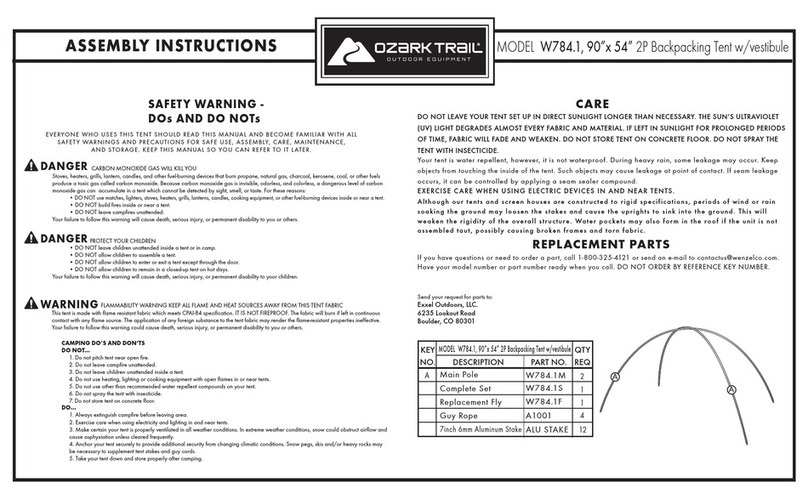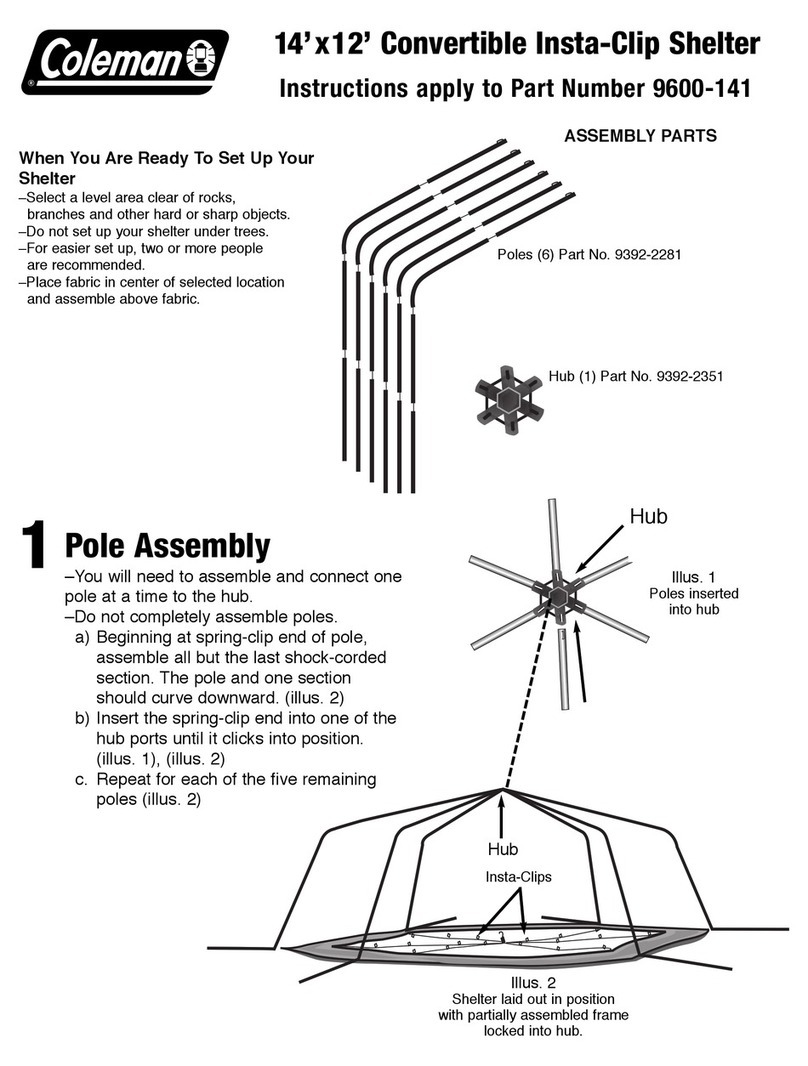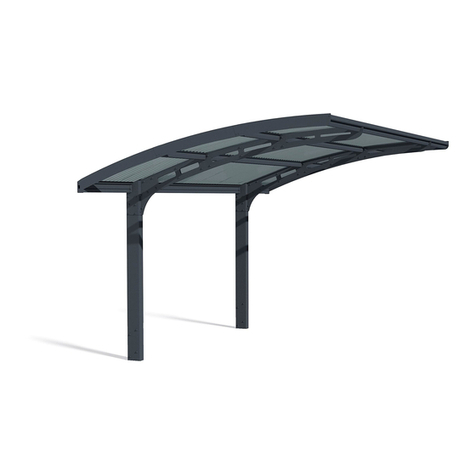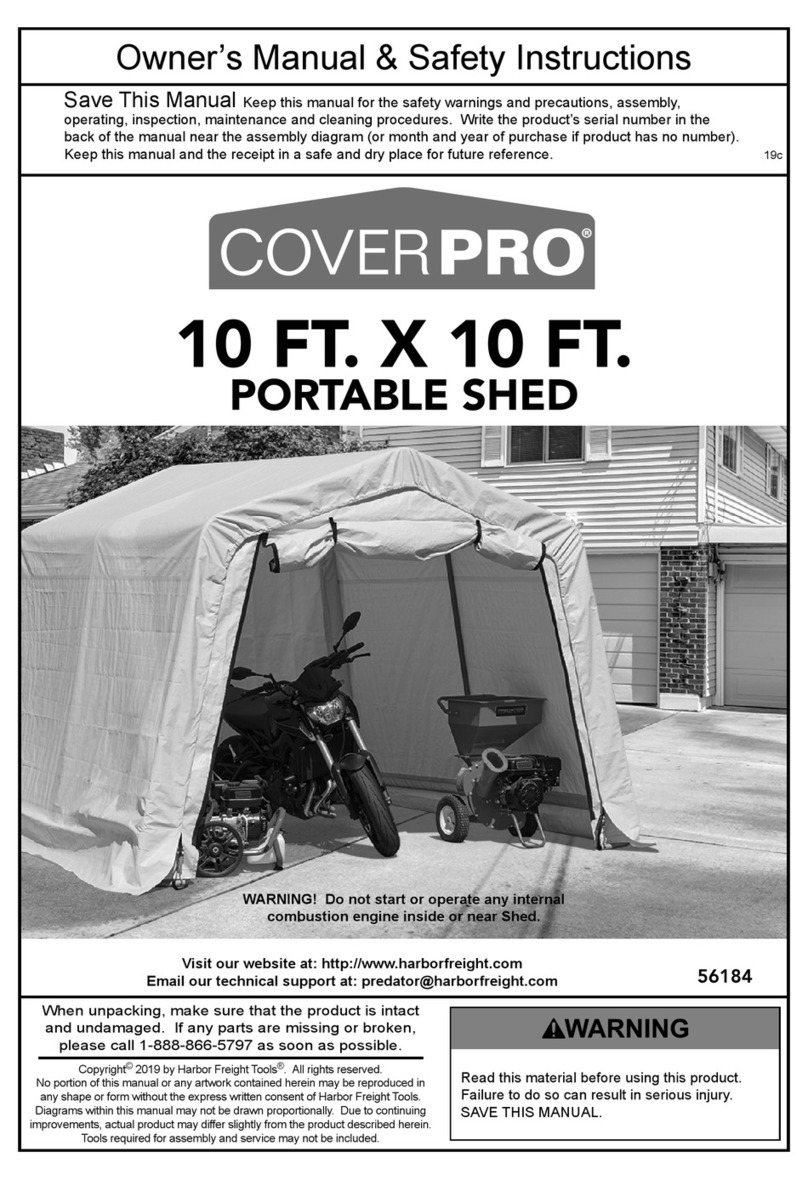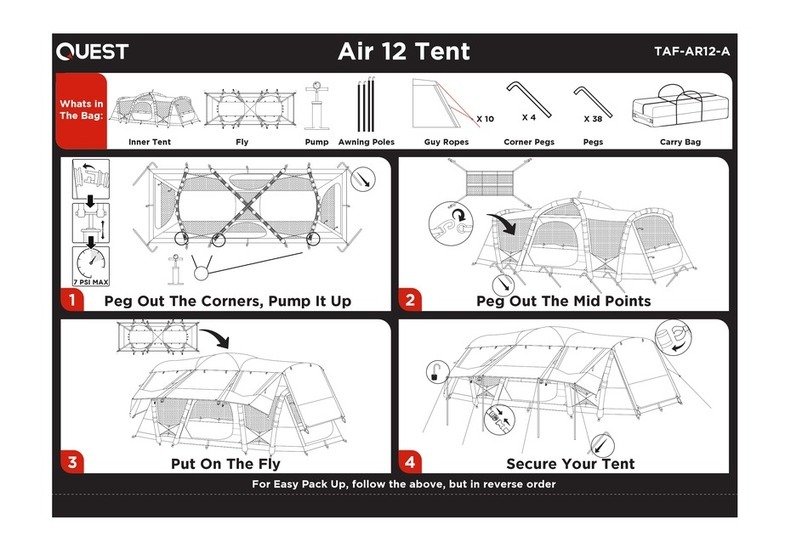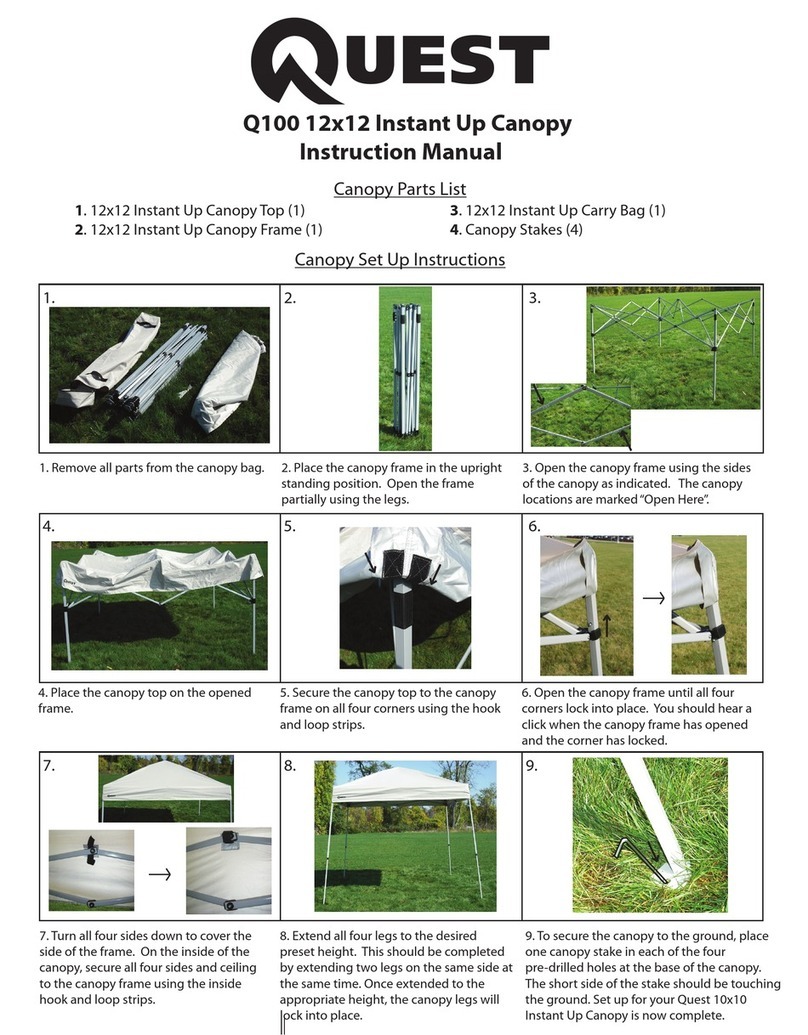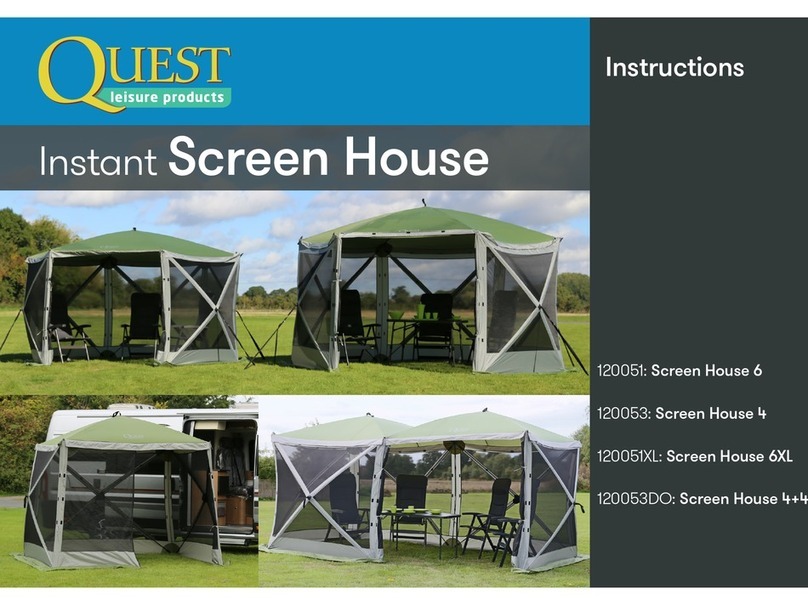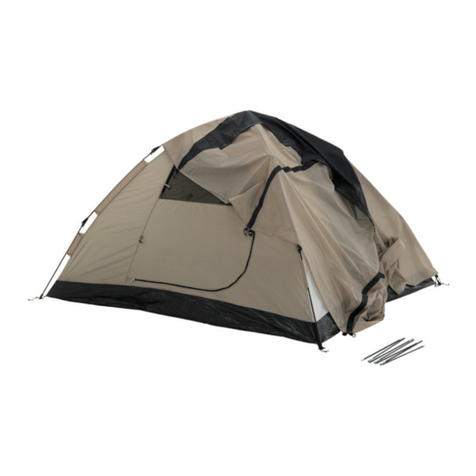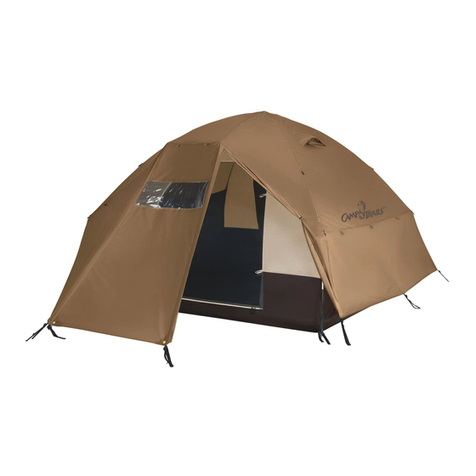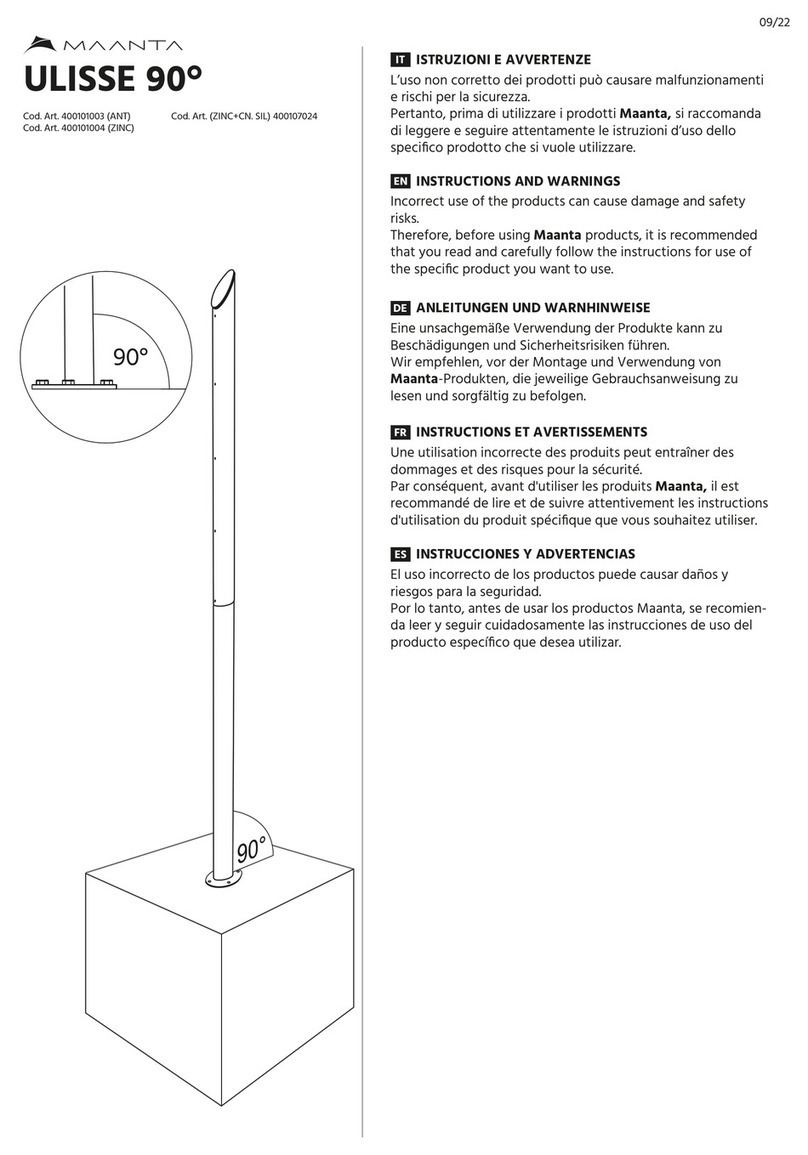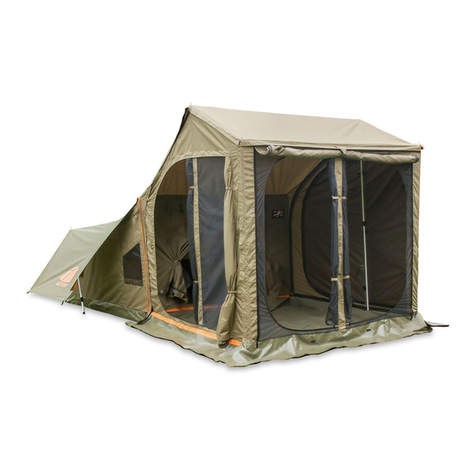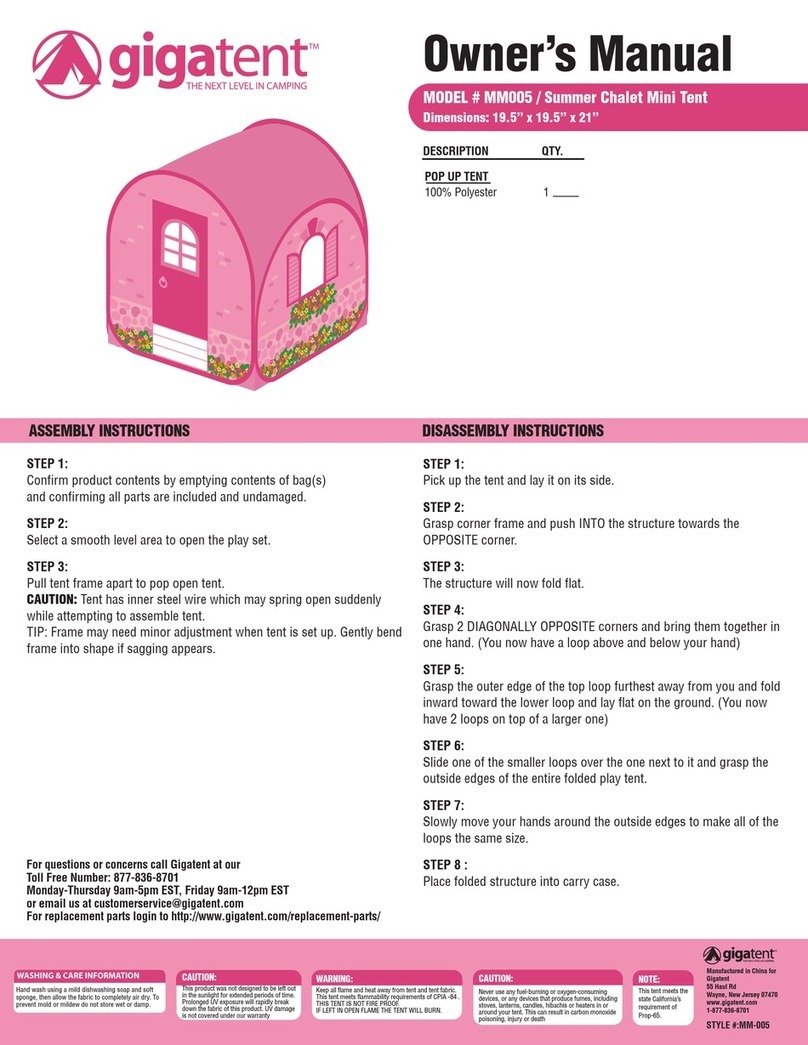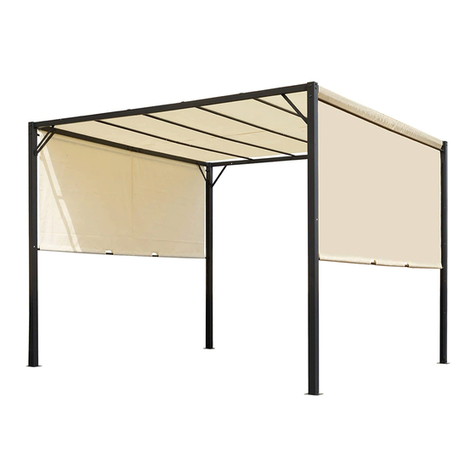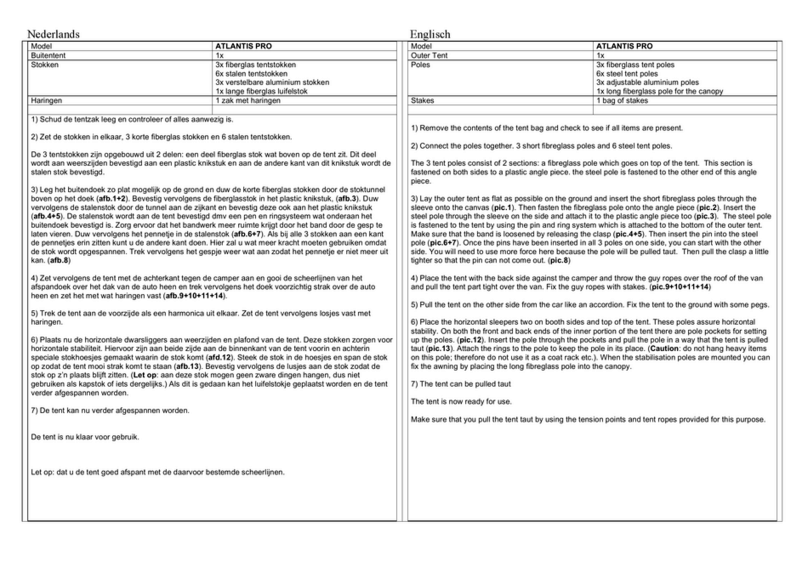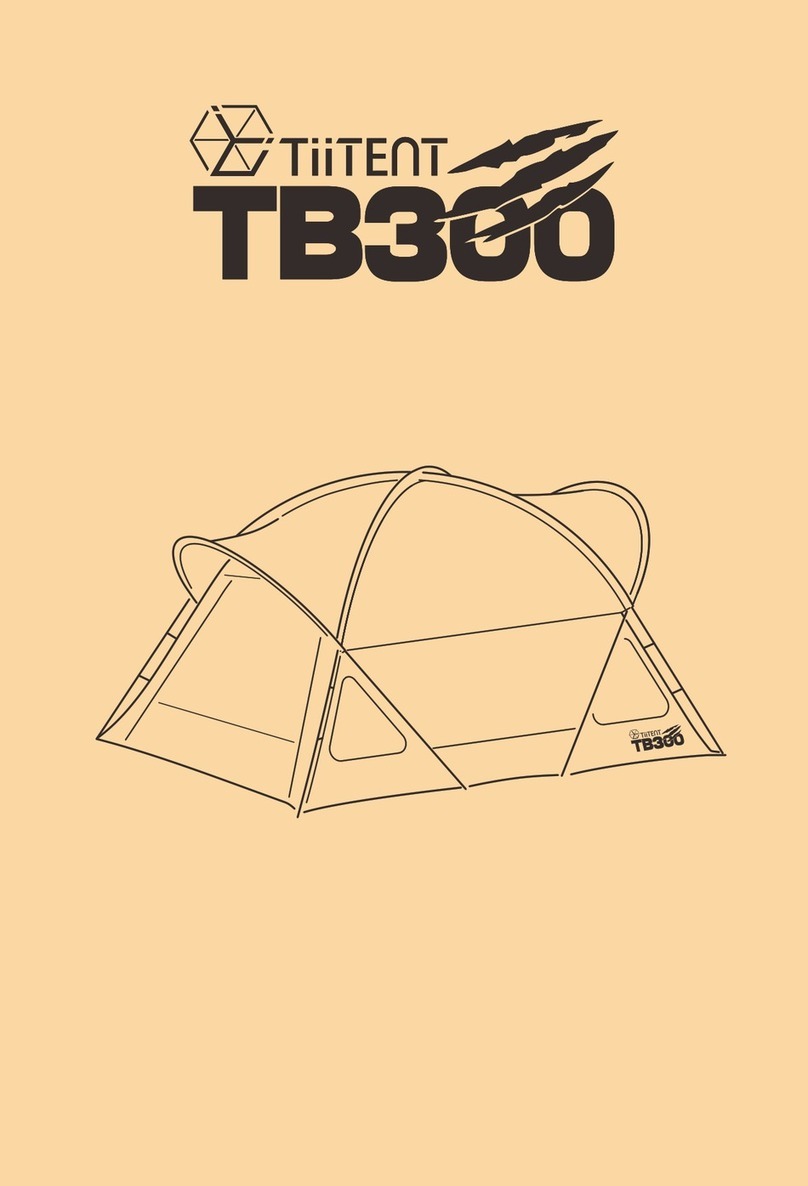
9Instruction version: 5
Screen House and accessories full instructions
Storage
This product must be stored away dry. If the product gets wet and packed away when wet, it
must be taken out and dried. Failure to do so can lead to mould growth and damage to your
screen house.
Wear, Tear and Usage
The screen house is used outdoors and thus will be subject to standard wear and tear caused
by the weather and other external influences. This section lists some, but not all of the standard
wear and tear you may get with your screen house.
• Fading : With all polyester materials used outdoors some fading or colour changing will occur.
This will change depending upon how often you use it, how long it is up when you use it, what
the weather is like when you use it and other external influences such as shade etc. This fading
only affects the look of the material and does not affect the performance of the screen house.
It is a natural process and cannot be avoided. Fading can be improved by using a proofing
spray as listed in the maintenance section below.
• Colour changing : Similar to fading, all polyester materials used outdoors may be affected by
colour changing. This is down to the amount of sun they receive whilst out, the atmospheric
conditions at the time and other external factors. Colour changing is only cosmetic and does
not affect the performance of your screen house.
• U.V. Degradation : Over time all polyester materials will break down and become brittle. This
is down to the effect the sun has on the material. Your screen house is protected against this
with its advanced U.V. coating, but this protection does break down over time. The time it takes
will completely depend upon the weather conditions when used, such as the suns heat, cloud
cover, shade and others. This is a natural process that cannot be stopped, but you can protect
against it by regular cleaning and re-proofing (listed in the care and cleaning instructions).
• Condensation : Condensation is a natural process where moisture from the ground is drawn up
and collects on the roof or sides or your screen house. Whilst this is keep to a very minimum
thanks to the mesh side on your screen house, you may still get some on roof during certain
conditions. This will be made worse if you use the optional side walls and keep these side walls
closed as they prevent air flow and can increase condensation.
• Waterproofing : Whilst the roof on this screen house is waterproof the screen house itself
is not water tight. The sides on the screen house are not waterproof, even when using the
optional side walls the screen house is not water tight. In the event of rain, some water
may well get into the screen house. Over time the waterproof coating of the material can
deteriorate. This can be repaired by the use of a re-proofing spray as listed in the maintenance
section of the instructions.
• Weathering : The waterproof nature of the screen house roof may be affected by a process
called weathering. Weathering is a process where the screen house may seem to leak when
first used in the rain. When you sew a seam into any material you make a hole in the material
and then put a thread of cotton though this hole. Obviously this hole will leak water initially. The
weathering process is around the cotton thread. When the cotton thread gets wet it expands
and fills the hole made when the material was sewn together. When the cotton thread then
drys is shrinks back, but never to the same size it was initially. This process happens a few
times and eventually the thread stops expanding and shrinking, but will have sealed the hole
up. This whole process is called weathering and is the final process that makes your screen
house roof waterproof.

